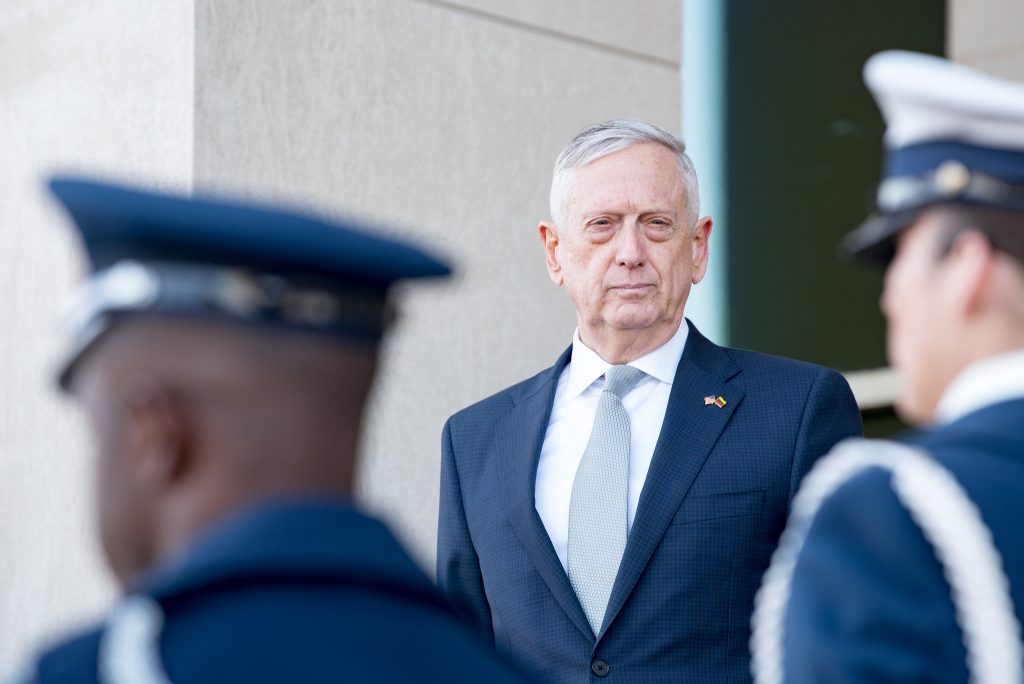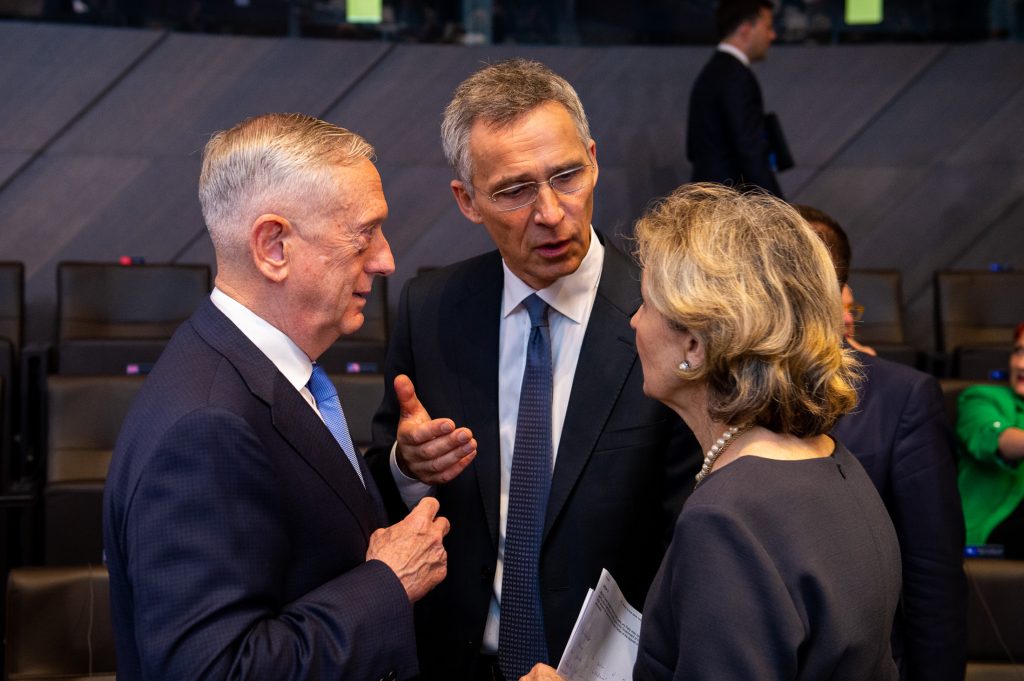By PAUL MCLEARY
 Even before Trump was sworn in as president, the announcement that he would pick Mattis as his Secretary of Defense was met with delighted relief “from the right, from the left, and from overseas.” Within hours, both the British and Norwegian defense ministers — coincidentally attending a conference in the US — were praising Mattis from the podium at the Reagan Library in California.
Even before Trump was sworn in as president, the announcement that he would pick Mattis as his Secretary of Defense was met with delighted relief “from the right, from the left, and from overseas.” Within hours, both the British and Norwegian defense ministers — coincidentally attending a conference in the US — were praising Mattis from the podium at the Reagan Library in California.
But the question has swirled since the day his nomination was confirmed by the Senate: “How long will Mattis last?”
We now know the answer. After trying to change President Trump’s mind over ending the US mission in Syria and withdrawing half of the 14,000 US troops in Afghanistan, Defense Secretary Jim Mattis handed the president his resignation on Thursday.
“One core belief I have always held is that our strength as a nation is inextricably linked to the strength of our unique and comprehensive system of alliances and partnerships,” Mattis wrote.
“Because you have the right to have a Secretary of Defense whose views are better aligned with yours on these and other subjects, I believe it is right for me to step down from my position,” he added. It was a tactful but unmistakable rebuke of a commander-in-chief who regularly threatens Washington’s closest allies while taking halting steps toward a closer relationship with Vladimir Putin and praising strongmen with anti-democratic bents in places like Hungary, the Philippines, and Brazil.
“My views on treating allies with respect and also being clear-eyed about both malign actors and strategic competitors are strongly held and informed by over four decades of immersion in these issues,” Mattis added, a striking contrast with Trump’s lack of government experience before his inauguration.
Left to right: Mattis with NATO Secretary General Jens Stoltenberg and Ambassador Kay Bailey Hutchison, US Permanent Representative to NATO.
Damage Control In NATO
The president’s aversion to maintaining alliances and refusal to keep decades-long allies in the loop before announcing spur-of-the-moment policy changes has led to serious doubts within the post-war order that the United States will remain a reliable partner and global leader.
One such moment came in July, when Trump upended the normally predictable annual NATO summit in Brussels. In a meeting about Afghanistan, the impatient president launched into a broadside over the lack of defense spending among members of the alliance, threatening to withdraw unless allies met those spending goals. The president then walked out of the room full of European leaders and demanded an impromptu solo press conference, effectively scuttling the rest of day’s agenda.
With Trump gone, Mattis remained behind to soothe allied nerves. In the process, he was unable to catch up with the president before he took the stage with Secretary of State Mike Pompeo and National Security Advisor John Bolton by his side, creating an image of Trump and his new favored advisors, with Mattis somewhere in the ether. After the event, reporters traveling with Mattis waited in his airplane on the tarmac where they watched as Trump boarded Air Force One and took off — with no Mattis in sight.
When the secretary finally arrived after conferring with allies, he denied there were any problems that couldn’t be sorted out.
It was classic Mattis. And it was a moment the retired Marine would find himself repeating time and again as he and other cabinet members were forced to explain away an unending stream of tweets and offhand remarks made by a mercurial president.
Likewise, during his preferred off-camera press briefings in the Pentagon’s media workspace — during which he would stand in the middle of a circle of reporters — Mattis was often exasperated by questions over reports of his rifts with the president, describing differences of opinion as normal.

A Widening Breach
But the strategic differences were large and frequent, and the gap between the two men only grew with time. It took months of back and forth before Mattis and the chairman of the Joint Chiefs, Gen. Joseph Dunford, convinced the president to add 5,000 troops to the advising mission in Afghanistan. That’s a plus-up the president more than reversed Thursday by reportedly calling for 7,000 troops to leave by the spring, leaving 7,000 still in country.
Mattis also initially opposed pulling out of the nuclear deal with Iran, sending active duty troops to the US border with Mexico, suspending military exercises with South Korea, among other decisions.
When it comes to pulling 2,000 troops out of Syria and 7,000 out of Afghanistan on short notice, and against the advice of the president’s civilian and military advisors, one retired military officer involved in the conflicts in the Middle East in Afghanistan said Thursday that “our commander in chief seems to have rejected all the best advice of those who have given their adult lives to these causes,” calling it “a terrible thing,” both for American advisors in Syria and Afghanistan as well as American partners overseas.
“A good commander values and seeks the counsel of his advisors. A decision that goes against all such advice is a reckless one. The commander in chief should not exercise his power under the constitution recklessly,” he added.
Sen. Marco Rubio tweeted a similar sentiment after reading Mattis’ letter, saying it “makes it abundantly clear that we are headed towards a series of grave policy errors which will endanger our nation, damage our alliances & empower our adversaries.”
Mattis said in his letter that he will step down in February in order to ensure a new defense secretary is in place months before September’s changeover of the chairman of the joint chief of staff. It is unclear if Gen. Dunford will make it that far however, after Trump announced at the Army-Navy football game two weeks ago that Gen. Mark Milley, the current Army chief of staff, would be his nominee to replace Dunford.
Equally unclear is who might take over as the top civilian at the Pentagon. Sources Thursday night floated Sen. Tom Cotton, outgoing House Armed Services chairman Rep. Mac Thornberry, former senator Jim Talent, and Deputy Defense Secretary Patrick Shanahan. But at this point, few have any real idea who the president might nominate.
Mattis’ letter puts the Pentagon in a tough spot however, given that the secretary and the chairman of the joint chiefs — the top civilian and uniformed officials — are now lame ducks, waiting for their replacements to arrive.

No comments:
Post a Comment